In April 2015 the Sunday New York Times broke a major full-page story, “Findings Reignite Debate on Claim of Jesus’ Bones” based on new chemical tests done on the ossuaries from the Talpiot “Jesus” tomb comparing it with the controversial “James son of Joseph, brother of Jesus” ossuary that came to public light in 2002. [1]Other Major Media Coverage: The Jerusalem Post: Geologists Claim Stats, Science, Prove Jesus Buried in Jerusalem with Wife and Supposed Son NBC News: Geologist Revives Controversy Over Jesus … Continue reading
Dr. Aryeh Shimon is interviewed on the results of these tests that compare extensive scrapings from inside and outside ossuaries carried out by the Israel Antiquities Authority of comparative ancient tombs of the same period in Jerusalem. Previously, tests had been done on patina, as noted below, but the new tests were of a far more telling nature, accessing the limestone beneath the patina. Limestone ossuaries over time absorb the soil and chemical environs of the tomb they are placed in. Each tomb has a characteristic chemical profile unique to its environment. Dr. Shimron’s conclusion is that there is an extremely high probability that the James ossuary was originally taken from the Talpiot tomb–either at the time of its discovery in 1980 by a construction crew, or perhaps earlier–since the tomb itself was found unsealed with no blocking stone. I should also point out that Dr. Shimron also sampled an ossuary from the nearby Talpiot Tomb B, just 60 meters away, and it did not match at all the Talpiot “Jesus” tomb ossuaries (Tomb A). This shows that Tomb A had a very specific and unique chemical environment–even compared with a tomb quite close by. Everyone seems to agree that statistically speaking, adding the James ossuary to the names that are already in the Talpiot tomb changes everything in favor of its high probability of being the tomb of Jesus of Nazareth and his family, see the calculations by Kilty and Elliot, “The James Ossuary and the Talpiot Tomb.”
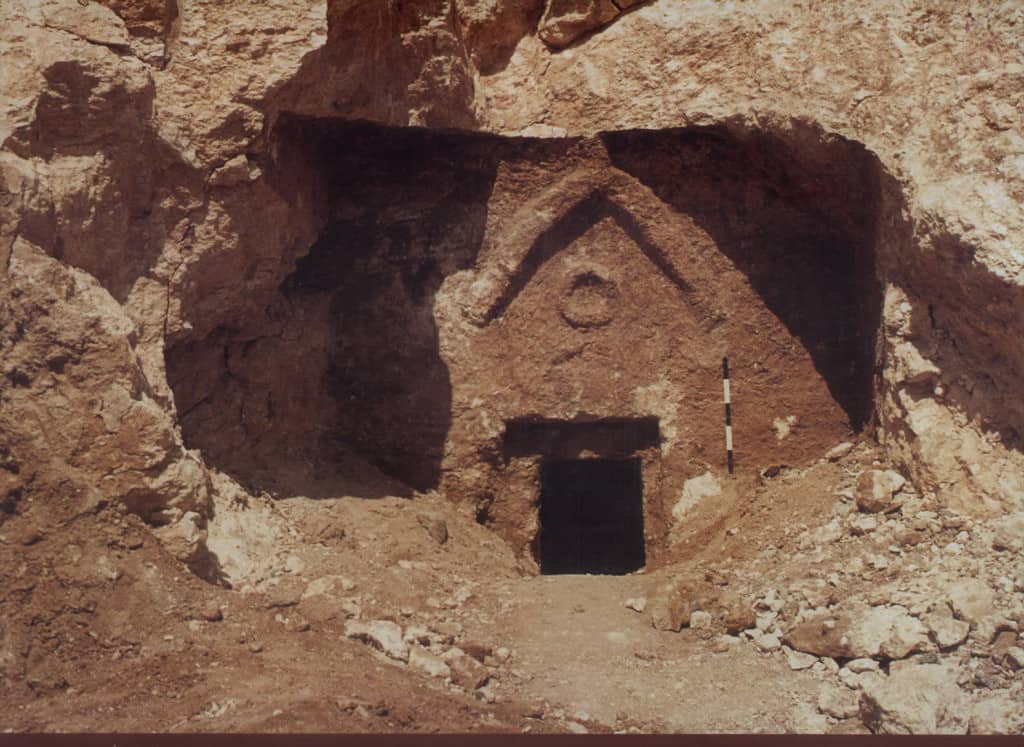
You can read an on-line version of the full New York Times story here:
Dr. Shimron was looking for unusual amounts of elements derived from Rendzina soil, like silicon, aluminum, magnesium, potassium and iron, as well as for specific trace elements, including phosphorus, chrome and nickel — signature components of the type of clayey East Jerusalem soil that he says filled the Talpiot Tomb during the earthquake. The findings, he says, clearly place the James ossuary in the same geochemical group as the Talpiot Tomb ossuaries. “The evidence is beyond what I expected,” he said.
What follows is the backstory on this controversial issue. For an overview of the James ossuary controversy more broadly see my post “What is What Regarding the Controversial James Ossuary.”
Is the James Ossuary from the Talpiot Tomb?
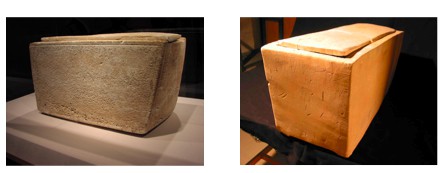
There are four issues to be addressed related to the possibility that the James ossuary came from the Talpiot Jesus tomb.
First, if the James ossuary was in fact the tenth missing ossuary from the tomb, even though it has disappeared, it was definitely catalogued by the authorities at the IAA, apparently measured, and given a registration number. Oded Golan says that he purchased it from an antiquities dealer in Jerusalem. It is difficult to construct any kind of hypothetical scenario that would have it removed from the IAA collection and end up on the market.
Second, even though the dimensions of the missing ossuary and that of the James ossuary are close, it is also described as plain and broken by Rahmani in his catalogue. Although in 2002 the James ossuary was broken while in transport to the Royal Ontario Museum and subsequently repaired, it was not broken when Golan acquired it. While not elaborately ornamented, it does have faint traces of the beginnings of rosette designs on the side opposite the inscription, so technically it is not “plain.” Rahmani, known for his keen eye and detailed descriptions, would have not likely missed this feature.
Third, Golan has testified that he obtained the ossuary sometime before 1978, providing photographic evidence to support his story, whereas the Talpiot tomb was not excavated until April, 1980. [2]See Oded Golan’s summary of the trial testimony: https://bibleinterp.com/articles/authjam358012.shtml Although it is possible that it had been looted from the tomb sometime previous to 1980, we don’t know if the entrance to the tomb was visible to passerbys before the construction blast that obliterated its outside front entrance or porch, making it stand out even from the road below.
Finally, since Hegesippus reports, in the second century CE, that the tomb of James was visible in the Kidron Valley, not far from the southwest corner of the Old City, how and when would James’s ossuary have been moved to the Talpiot tomb?
Sometimes it seems impossible to fit all the pieces of a complex puzzle together but it is nonetheless important to have those pieces in view. Recently new evidence has come to light that not only supports the case for the James ossuary originating in the Talpiot tomb, but addresses these major objections in an unanticipated way. We are now in a position to put all that evidence together with some compelling new results.
Recently a group of scientists headed by Amnon Rosenfeld of the Israel Geological Society published a summary of their own work on the authenticity of the patina inside the inscribed letters of the James ossuary. Rosenfeld was on the original team at the IGS that had authenticated the patina on the ossuary in 2002. They conclude:
The most important indication that the inscription “Ya’akov Son of Josef Brother of Jesus” is authentic is the beige patina that can be found inside the letters, accreting gradationally into the inscription. The patina can be observed on the surface of the ossuary continuing into the engraving. . .These minerals and the circular pitting within the thin layers of the beige to gray patina were found on the surface of the ossuary and, more importantly, within the letters of the inscription. They indicate biological activity and are the product of airborne and/or subaerial geo-bio activity that covers all surfaces of the ossuary . . .indicative of slow growth over many years. [3]“The Connection of the James Ossuary to the Talpiot (Jesus Family Tomb) Ossuaries” on-line at: https://www.bibleinterp.com/articles/JOT.shtml. The two other principal investigators were H. R. … Continue reading
The team then turned to an evaluative analysis of the scientific tests done in 2006 on the comparative chemical composition of the patina accretions on ossuaries taken from various ancient tombs in the Jerusalem area. The premise of the tests was that ossuaries accumulate distinctive and measurable biochemical “signatures” based on the cave environments in which they have spent the past two millennia. [4]Peak elements such as silicon, phosphorous, titanium, iron, aluminum, and potassium are compared according to their ratios. Patina samples were taken from the James ossuary, three ossuaries from the Talpiot Jesus tomb (Jesus son of Joseph, Mariamene, and Matthew) and ossuaries from thirteen other burial caves in the area. By comparing these signatures one can determine if the James ossuary had developed its patina in that particular “tomb” environment:
Among the examined 14 burial caves was also the Talpiot cave. Six Talpiot tomb wall and ceiling patinas were sampled December 14th, 2006 (op. cit.). The elemental spectra of the samples were examined by SEM-EDS in the Suffolk Crime Lab (NY). Each sample was analyzed (SEM-EDS) in at least 3 different locations. The differences between tombs were easily discerned by the elemental fingerprints. The quantitative variability of the elements (patina fingerprint) within an individual tomb (wall patina, ceiling patina, ossuary patina) were small, 5% or less. [5]See Rosenfeld, et. al., op. cit. and Rosenfeld, A. and S. Ilani. 2002. SEM-EDS analyses of patina samples from an ossuary of “Ya‟akov son of Yossef brother of Yeshua.” Biblical Archaeology … Continue reading
Even tombs that shared a similar rock formation in close proximity to one another nonetheless had their own distinctive chemical signatures. The results showed that the James ossuary shared the same chemical signature as the three tests ossuaries from the Talpiot Jesus tomb as well as the walls and ceiling of that tomb. In contrast, the James ossuary patina signature differed considerably from any of the other thirteen burial caves. [6]The full study by Charles Pelligrino, “The Potential Role of Patina History in Discerning the Removal of Specific Artifacts from Specific Tombs,” in The Tomb of Jesus and His Family? Exploring … Continue reading
Rosenfeld and his colleagues suggest that based on these patina fingerprints the James ossuary was more likely a looted eleventh ossuary, rather than the missing tenth ossuary that had been catalogued by the IAA in 1980 and discarded or misplaced. They observed that the James ossuary was weathered intensively with massive pitting and striations.
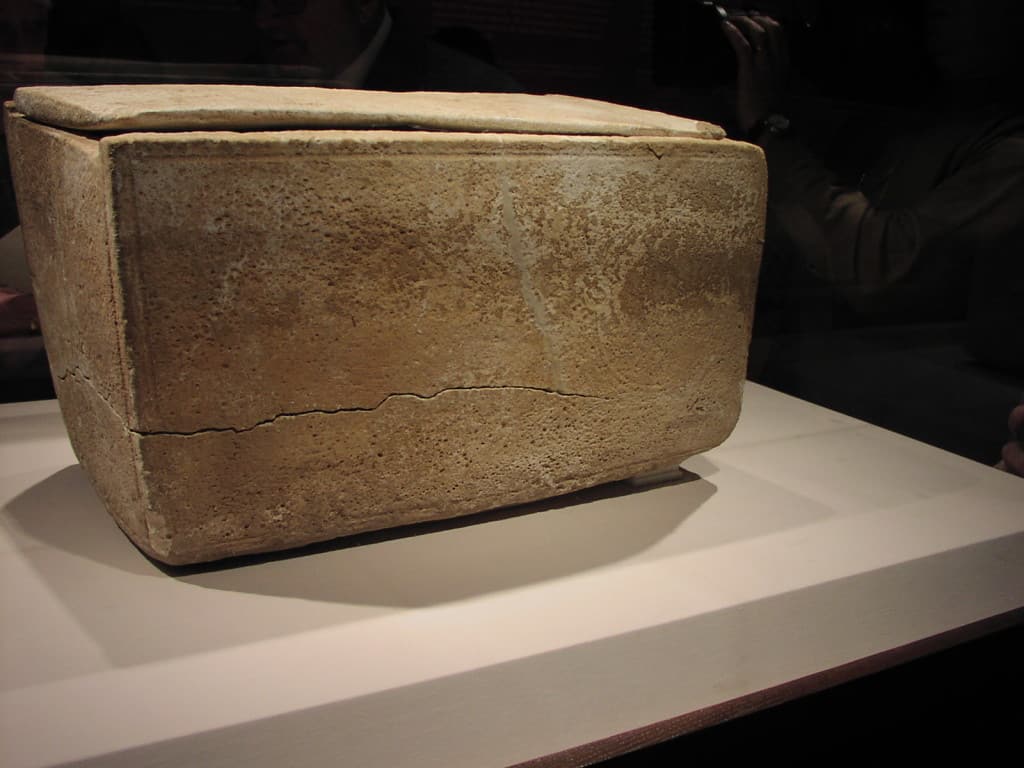
None of the other nine ossuaries from the Talpiot tomb show this kind of weathering. They concluded, on the basis of this weathering, that the James ossuary had been exposed to the elements for at least 200 years. Since we know that the blocking stone was missing from the tomb when it was examined in 1980, and the tomb itself was filled with the local terra rosa soil to a depth of two feet, covering the tops of the ossuaries in the niches, the James ossuary had likely been nearer the exposed doorway of the tomb, where the fill was more shallow. When or how James ossuary would have been taken from the Talpiot tomb we cannot determine. It might have been a number of years before the 1980 excavation of the tomb, or it could have been looted the first night when front porch of the tomb was blown open and exposed, before the IAA officials arrived to begin their work. If it were close to the entrance it would have been the only ossuary seen inside by looters since the others were covered with soil.
During the trial Oded Golan presented photos taken in 1976 in his parents’ apartment showing that he possessed the James ossuary, with its full inscription at that time—before the excavation of the Talpiot tomb in 1980. A photographic expert,Gerald Richard, former head of the Department of Photography and Documentation at the FBI, found no possibility that the photos were made at a later time. [7]See Oded Golan’s summary of the trial testimony cited above.
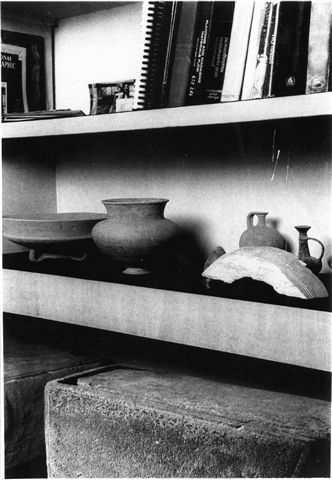
If the James ossuary inscription is authentic and it comes from the Talpiot Jesus tomb, what about the late second century CE report by the Christian chronicler Hegesippus who says the tomb of James was visible in the Kidron Valley, not far from the southwest corner of the Old City wall, where James was murdered? It hardly seems likely that the tomb of James was once in that location and then subsequently moved to the Talpiot tomb. We suggest that there well might have been some kind of monument to James in that area but we know little of Hegesippus, who spent his career in Rome. We can’t assume that he is reporting any kind of eyewitness account. In Rome there are reports of tombs and monuments to both Peter and Paul in several locations. [8]See Graydon F. Snyder, Ante-Pacem, pp. 180-189. Monuments were assumed, over the ages, to be tombs, and tombs might not have monuments. The fourth century church historian Eusebius, for example, quotes an unknown writer named Gaius who says: “But I can show the trophies of the apostles. For if you will go to the Vatican or to the Ostian way, you will find the trophies of those who laid the foundations of this church.” [9]Eusebius, Church History 2. 25. 7. We are not certain if he means some kind of monument, pillar, or relic, or is he speaking of a tomb. Clement of Rome, who lived just a few decades after the deaths of Peter and Paul, mentions their martyrdom but seems to know little of any circumstances and mentions no tomb locations (1 Clement 5:3-7).
Today there are several monumental tombs in the Kidron Valley, dating to the late Hellenistic period (200-100 BCE) that are variously identified as the “Tomb of the Blessed Virgin Mary,” the “Tomb of Zechariah,” the “Pillar of Absolom,” and a tomb inscribed as that of a priestly family,that is sometimes identified as the “Tomb of James.” On Mount Zion today, the southwest hill of Jerusalem, millions of pilgrims visit what is called “the tomb of David,” though most scholars locate it further to the south, outside the city of David. No one takes any of these sites and locations seriously as historically connected to these figures. They are part of hagiographic traditions that Christians developed in the late Byzantine period down through the Crusades.
Even though we had initially suggested the possibility of the missing tenth ossuary being that of James, based on the similar dimensions and the patina fingerprints that seemed to place it in the Talpiot tomb, we must always adapt our views to new evidence. [10]Jacobovici and Pellegrino, The Jesus Family Tomb, pp. 175-192 and James Tabor, The Jesus Dynasty (paperback, 2007), pp. 319-331. Shimon Gibson had suggested this theory of a missing eleventh ossuary to us back in 2006, when he recalled that the ten ossuaries inside the niches, and removed to the Rockefeller, had been covered with soil. When the IAA archaeologists arrived on a Friday morning, March 28, 1980, the first day of the excavation, they took photos and there is no evidence of any ossuaries having been dug out of the niches. But it is entirely possible, since patina tests show the James ossuary spent much of its history over the past two millennia in the Talpiot tomb environment, that it was near the door, less covered with soil, and thus easy to carry off. By whom or when we will likely never know.
See also “What’s What Regarding the Controversial James Ossuary and the Talpiot Tomb“

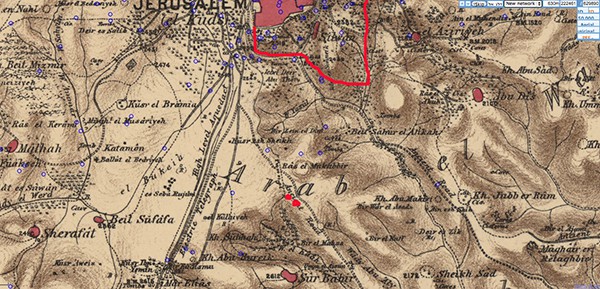





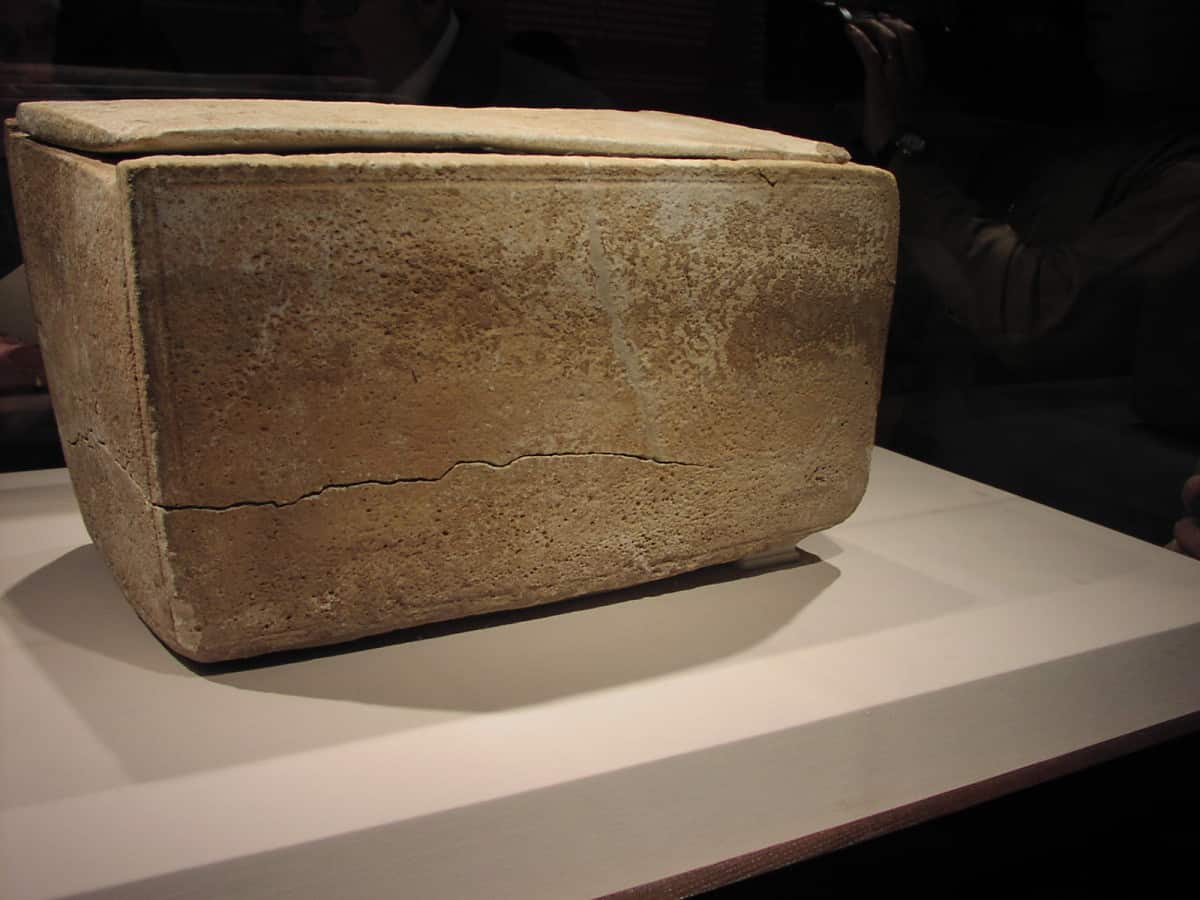
Comments are closed.